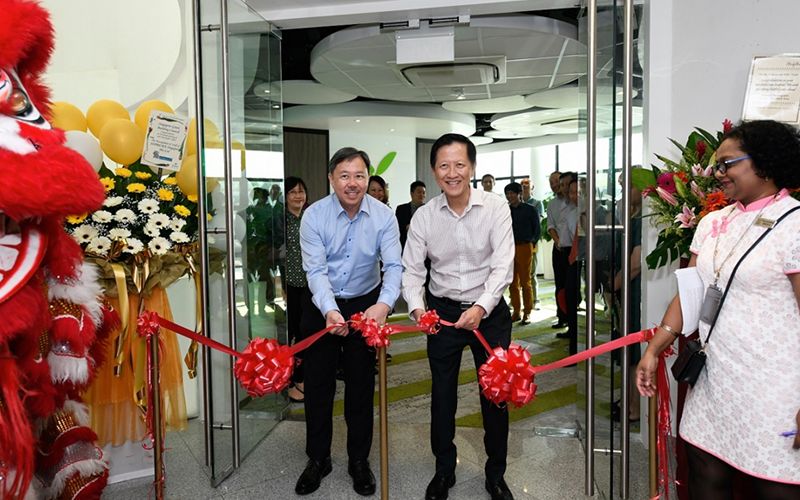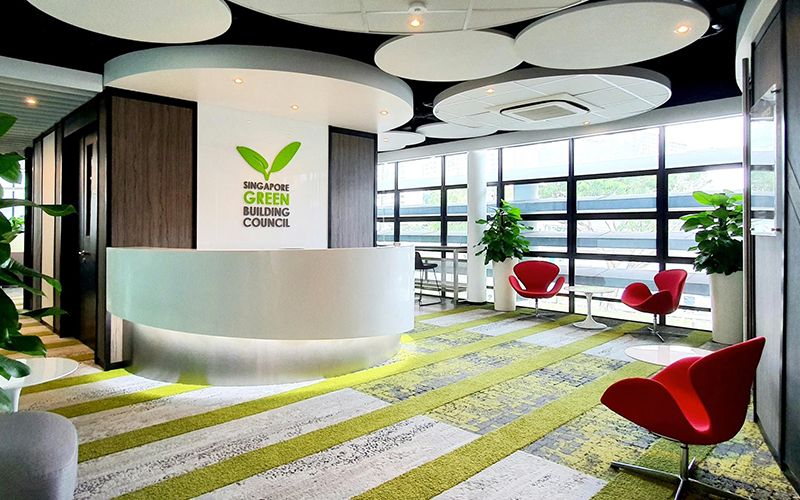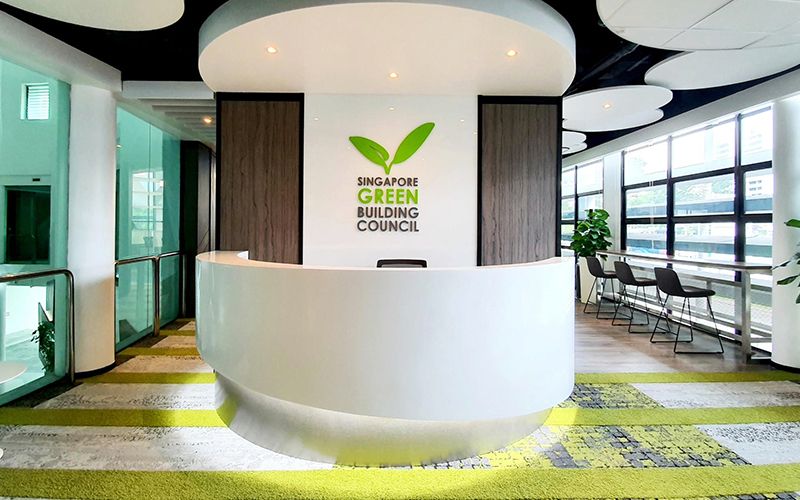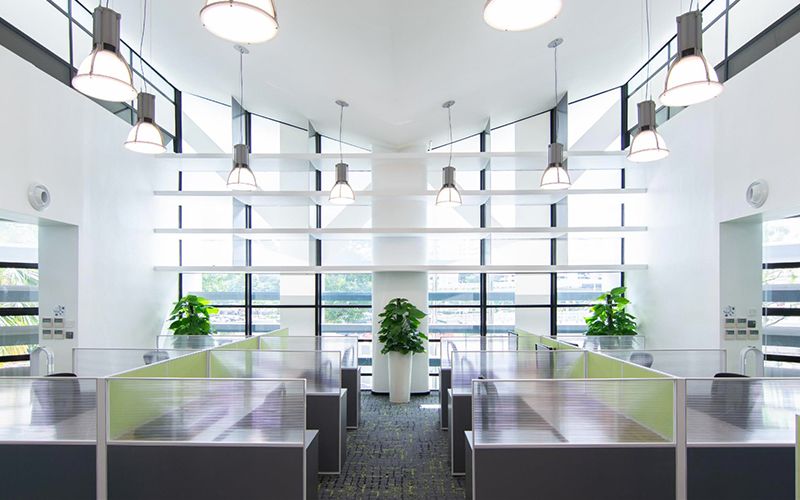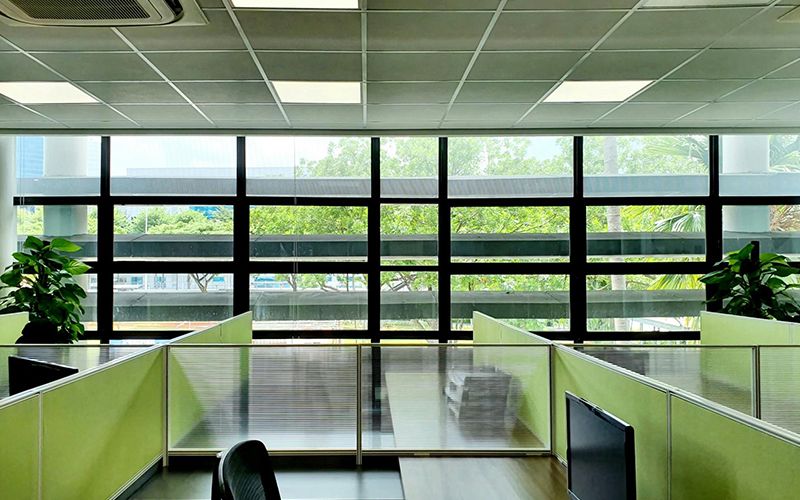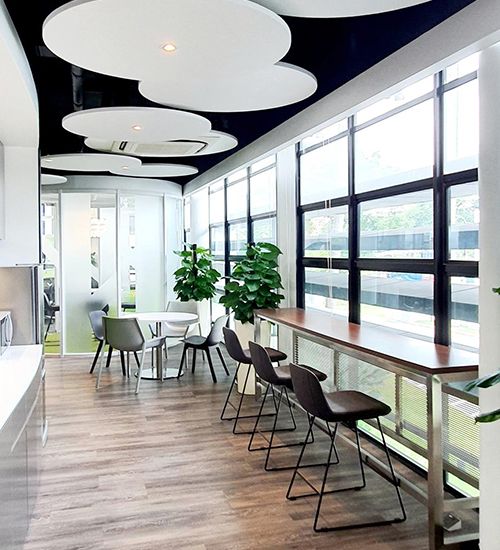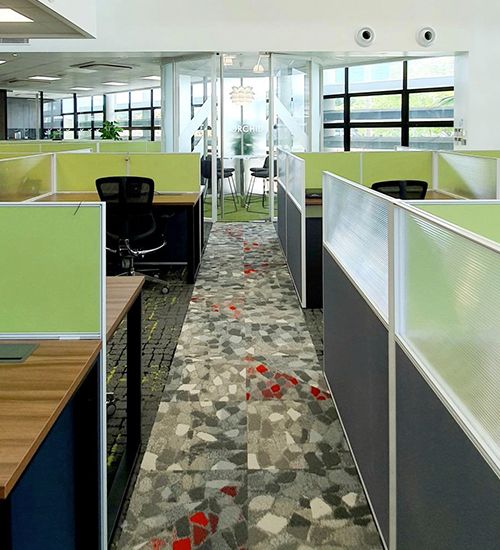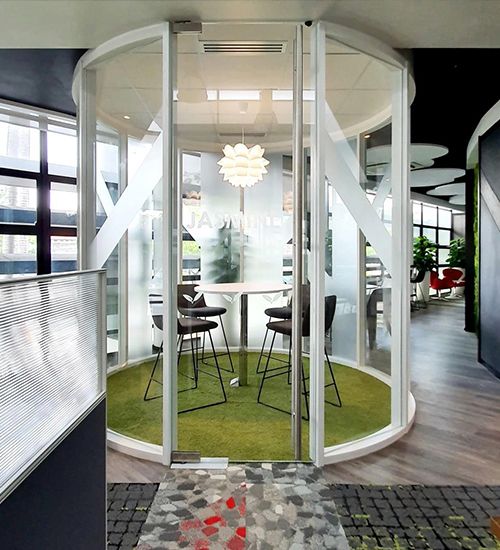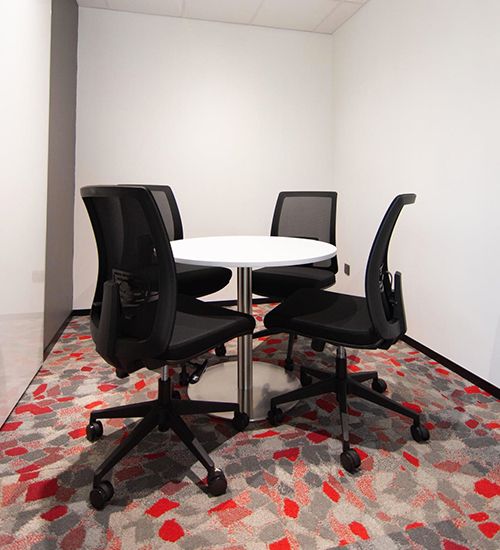If there is a single organisation that knows just what it takes to create a low carbon office, the Singapore Green Building Council (SGBC) would be it.
An Established Member of the World Green Building Council network, SGBC is an enabler of sustainability in the built environment represented by a distinctive public-private partnership that spans the real estate value chain. Its Singapore Green Building Product certification scheme was set up in 2010 to assess and rate building materials and products, and awards each product a score based on a four tick rating system. Using SGBP-certified products with two ticks or more helps to improve a green building project’s standing under Singapore’s flagship green building standard – the Building and Construction Authority (BCA) Green Mark scheme. This helps to ensure that the materials being selected for a project have the lowest possible impact on the environment.
Because the Council’s remit has grown rapidly since it began certifying green building products, larger operational premises were required to accommodate this growth and give the SGBC team a space that reflects the Council’s high sustainability standards. On 3 February 2020, SGBC opened the doors to its new home at the BCA Braddell Campus (formerly known as the BCA Academy) with a spirited get-together, topped with a lion dance and prosperity toss to ring in the Lunar New Year.
Moving to new premises gave SGBC the opportunity to establish a new collaborative base for the green building movement in Singapore, so it made perfect sense to relocate to BCA Braddell Campus, which houses BCA’s education and research arm.
Mr Hugh Lim, Chief Executive Officer of the Building and Construction Authority, and Dr Ho Nyok Yong, President of the Singapore Green Building Council, kicking off the festivities with a ribbon-cutting ceremony. Photo by Singapore Green Building Council
A welcoming reception area invites visitors into the Singapore Green Building Council’s second-floor office at the BCA Braddell Campus in central Singapore. Products shown: Human Nature and Human Connections. Photo by Singapore Green Building Council
SGBC needed to move into more spacious premises that could accommodate their growth and match their exacting sustainability standards. Products shown: Human Nature, Human Connections, Level Set. Photo by Singapore Green Building Council
Light shelves reflect natural daylight deep into the workspace Translucent partitions divide workstations, giving the open plan space a light, airy feel. Product shown: Human Connections. Photo by Singapore Green Building Council
Located on the second floor of the building, the open-plan office space has expansive floor to ceiling windows that provide tree canopy views from almost anywhere in the office. Photo by Singapore Green Building Council
The move was also a chance to create a showpiece green and healthy office interior, and in doing so help champion sustainability in the construction industry as a concrete means for tackling climate change. SGBC’s executive director, Ms Yvonne Soh, is acutely aware of the need for the industry to lower emissions – “We must turn climate commitment into action. The built environment industry is in a prime position to mitigate climate change through the design and construction of more sustainable and efficient buildings.”
She also emphasises the need to accelerate the shift towards low-carbon building materials. “One of our key focus areas is to address the effects of climate change through the advocacy of greener, more sustainable buildings,” she said. And indeed, SGBC has been making steady progress towards decarbonising Singapore’s building industry. As Yvonne explained – “We have numerous programmes in place designed to drive change through almost every stage of the building and construction value chain.”
This philosophy led to strict material selection criteria for the new office. The Council chose Interface modular carpet and luxury vinyl tiles because they are certified to the maximum SGBP four-tick rating – on top of being carbon neutral across their life cycle. Among other materials, they also incorporated USG Boral’s drywall and plasterboard ceiling, Lam Chuan and Formica high pressure laminates and Akzo Nobel Dulux interior paints, all of which are SGBP 4-tick products. “To achieve any rating, the manufacturer must provide supporting documentation and test reports, which we then rate against proven benchmarks,” explained Yvonne. “To achieve a four-tick rating a product must also have a low carbon footprint.”
Hard meet soft: Carpet tiles inspired by urban landscapes lead the way to the LVT-paved pantry. Products shown: Human Nature, Human Connections, Level Set. Photo by Singapore Green Building Council
Interface’s Level Set LVT collection combines sleek sophistication with organic textures to bring nature indoors. Overhead, circular mineral fiber ceiling panels mimic white clouds. Photo by Singapore Green Building Council
Stone Course tiles in grey and red from Human Connections lead the way to a gazebo-like discussion pod. Photo by Singapore Green Building Council
The glazed discussion pods give staff acoustical privacy, while allowing natural light to shine through the space and deep into the office. Product shown: Human Connections and Level Set. Photo by Singapore Green Building Council
Mixing and matching from different collections to create a park-like atmosphere. Products shown: Human Nature and Human Connections. Photo by Singapore Green Building Council
SGBC Member CIAP Architects Pte Ltd, having worked on successful green healthcare and commercial developments, was entrusted to design and manage the fit-out of this green and healthy workplace for SGBC. One of its more recently completed projects include the award-winning Yishun Community Hospital, which is Green Mark Platinum certified, and is well noted for its lush landscaping and biophilic design. CIAP fully understood the task at hand. Clifford Chua, CIAP’s associate director, knew that the design had to draw much of its inspiration from nature “to reflect SGBC’s key role as a champion of green building developments”.
Climate change is also a very real concern for Clifford and CIAP. “In our small way, we hope to be able to guide development projects that we are part of to be greener and more environmentally sustainable,” he said. “We are grateful to SGBC for providing one such privileged opportunity to do so, in the form of their own new workplace.”
CIAP’s proposal for the project was to create the ambience of a park within the office space, encouraging occupants to connect with the natural environment through both an indirect and direct association with nature. The original floor design featured only the Human Nature collection, as CIAP had used the product before to satisfying results. One of Interface’s most popular ranges, Human Nature draws inspiration from natural stone pathways, manicured lawns and vibrant flowering fields.
On seeing the initial design, Singapore Business Manager Victoria Kok and Account Manager Mandy Low suggested that the Council incorporate the newer Human Connections collection as well. Human Connections also mimics stone paving, but here the focus is on urban landscapes. If Human Nature is manicured countryside and rolling fields, Human Connections is city courtyards, crazy paving and beautifully eroded stones. The range also features a unique system of matching tiles that have different levels of “moss growth” between the square paving stones, and as the tiles are asymmetrical they can be installed in any direction to create natural-looking floor designs without repeated patterns.
“Victoria and Mandy were very helpful,” Clifford said. “The two collections complement each other well and very nicely expanded our biophilic material design palette. The beauty of stone, pebble, grass and moss are wonderfully captured in these carpets, and help add tactile richness to the spaces.”
The carpeting, featuring various visual tones and textures of nature, plays a significant role in bringing the park theme to life. In the reception area and corridors, the two collections are combined to form textured paving patterns and a stepping stone effect. In the open-plan workspace, a stone course paving design carpeting is used to define pathways, while moss-covered stone carpeting demarcates the work areas. Green strips and circular patches are used as accents to inject colour and vibrancy to the predominantly natural stone coloured floor design, as well as to announce SGBC’s corporate green.
Interspersed throughout the office are pebble-shaped stools, cloud-like ceilings, Tulip coffee tables, Swan lounge chairs and wall panels that mimic tree trunks – each element inspired by and suggestive of the great outdoors. Meanwhile, tall potted plants and a green moss wall provide a direct connection to nature. Named after tropical flowers, the gazebo-like discussion pods with grassy carpeting reinforce the park theme. Meeting rooms are also named after local trees, such as the Angsana, Flame and Tembusu, with carpet tiles that reflect the colour of the respective trees’ flora.
Named after a local tree, the Tembusu meeting room features green Stone Course tiles from the Human Connections collection. Photo by Singapore Green Building Council
The Angsana room, featuring yellow Stone Course tiles from the Human Connections collection. Photo by Singapore Green Building Council
The Flame room, featuring red Stone Course tiles from the Human Connections collection. Photo by Singapore Green Building Councill
Large tall windows can often be a problem in offices, in terms of visual glare. “It was a challenge, turned into an opportunity,” explained Clifford. “While it allowed for generous daylighting and views out to nature, glare from the intense sun could adversely impact the occupants’ visual comfort.” A glare control strategy was devised, using a combination of light shelves, vertical fins, and patterned film to carefully filter and manage the sunlight, while still permitting views to the exterior. In turn, this led to a softer, more diffused and overall more pleasant lighting quality within, while the sunshade elements themselves became a design feature to further add visual interest to the space.
To lower energy consumption, air conditioning is zoned according to usage and occupancy requirements. Staff may also override the settings when needed and extend operation outside of normal scheduled time periods for selected areas of the office.
Employee wellbeing is as important as sustainability for SGBC. Workstations may be converted to accommodate standing, bar-height tables allow for standing meetings, while breakout spaces encourage staff to move around the office and work away from their desks.
SGBC is delighted with the results and is looking forward to promoting the virtues of green buildings and sustainability from its own workplace. SGBC President Dr Ho Nyok Yong sums it up perfectly – “The new SGBC Office is a testament to SGBC’s collaborative nature, working with like-minded organisations to create a healthy and sustainable space that showcases exemplary green building design. I hope that this new office will inspire the industry to create their own green and healthy places and spaces.”
